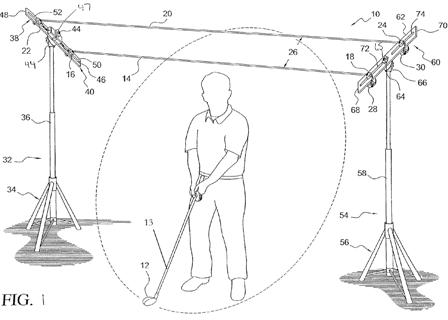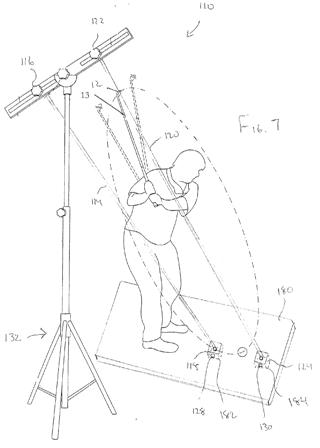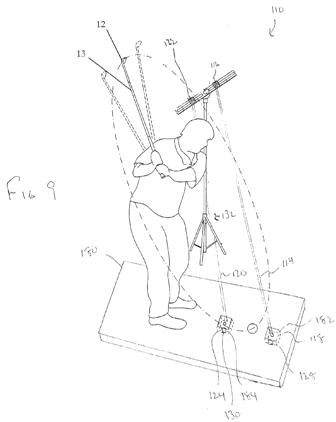The Week of Pelz – Day 3 – Dave’s Thoughts on Swing Planes
So far we have examined how Dave Pelz suggests we learn to read greens, as well as how he measures the “roll quality” of a green. Today let’s look at Dave’s thoughts on swing plane training via one of his patent applications that published on Thursday. The application published as US Pub. No. 



The application explains:
[0004] 2. Description of the Related Art
[0005] If a golfer’s club head is tracked throughout his or her swing, and the club head always travels in a single plane, that plane is called the golfer’s “swing plane”. The angle measured between the swing plane and the ground is the player’s swing plane angle.
[0006] Golfers who swing their club head in the same swing plane on both their back and through swings (and that plane also contains their sternum, shoulders and the ball) are said to be swinging in what the inventors’ believe is the “perfect” swing plane. Although most golfers address shots with their hands somewhat below their swing plane, the faster they swing and the more club head speed they generate on their down/through swing, the closer their hands come to moving up into the swing plane through impact.
[0007] Many golfers have two distinct swing planes. One swing plane is for their back swing. The swing then commonly changes to a different swing plane for their down/through swing. Either one (or neither) of these planes may be the “perfect” plane. Other golfers have no distinct planes in their swings at all, swinging in a constantly changing loop of directions. In general, the less complex or out-of-plane a golfer’s club head path motion, the more consistent they will execute solid and repeatable swings, and the higher their percentage of solid golf shots will be.[0008] As club length changes, it forces the swing plane angle of a golfer to change. In general, longer clubs require flatter (lower angle) swing planes, while shorter clubs require more upright (larger angle) swing plane angles for any given golfer. In practice, when golfers bend over too much (creating too flat a spine angle) the golfer can feel his or her body rotation being inhibited. Stand too tall (making the spine angle too vertical) and the golfers have trouble hitting solid shots, because his or her natural swing plane doesn’t pass through the ball. If one has ever heard the term “perfect swing plane”, it is the imaginary surface, often represented in drawings by a thick plane of glass that passes through a golfer’s shoulders and the ball when he or she is at address. The club head should move in that plane throughout the swing.
[0009] As those skilled in the art will certainly appreciate, the development of an optimal swing plane is very important in achieving improvements in one’s golf game and various attempts have been made to provide effective training tools. However, the prior devices are limited in their ability to effectively train a golfer. With this in mind, the present system for helping a golfer train his or her swing into the proper plane has been developed.
So, are would you be more likely to purchase the Pelz device or Haney’s PlaneFinder? The PlaneFinder looks a little more convenient to transport and set-up.
Dave Dawsey – The Golf Lawyer
PS – check out some of Mr. Pelz’s issued patents HERE
